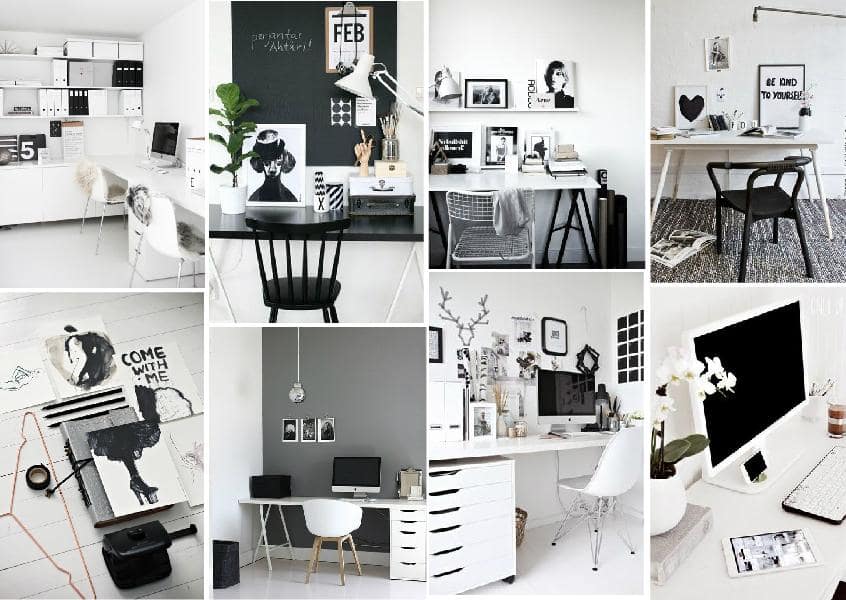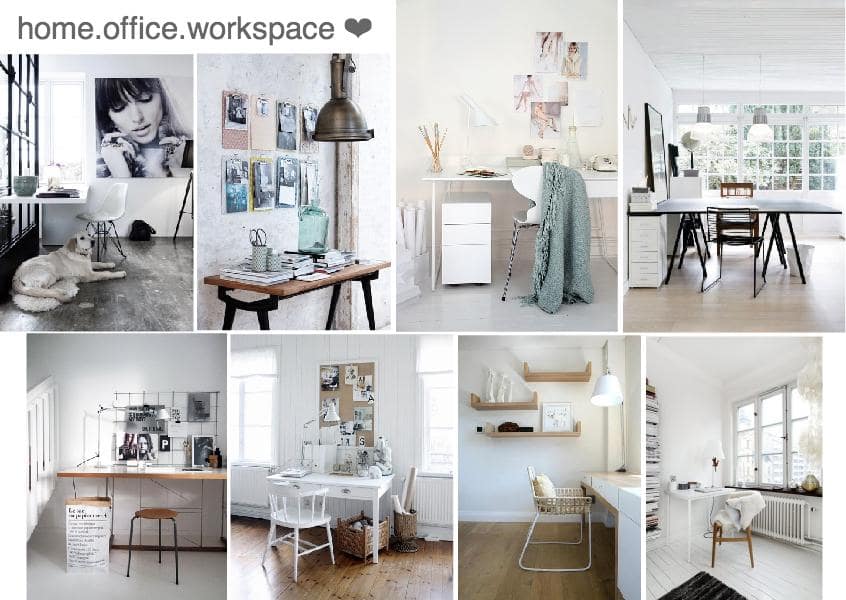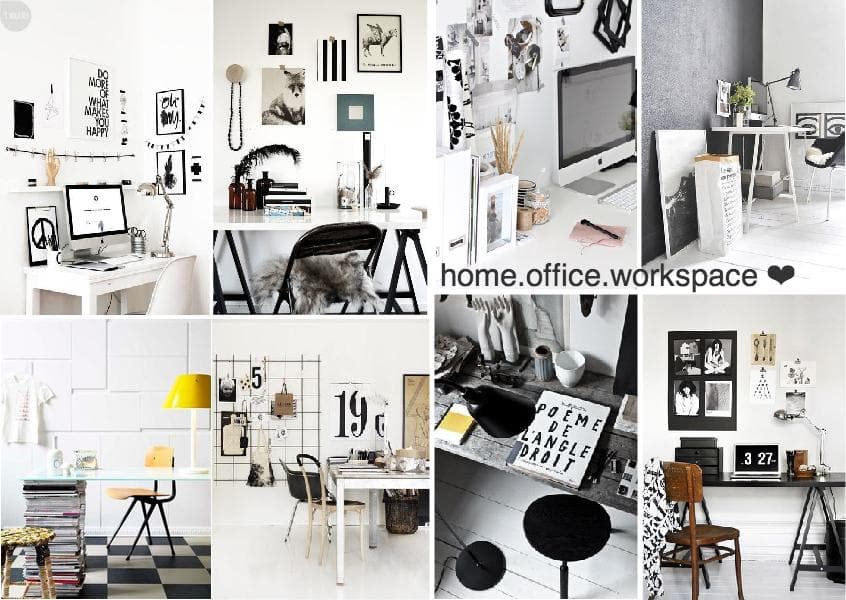Last Updated on December 20, 2024 by SampleBoard
In today's hybrid work environment, an organized and productive home office is not just a luxury but a necessity.
A clutter-free space can provide a sense of relief from distraction, frustration, and decreased productivity.
Here are some essential steps to transform your home office into a serene, efficient workspace, allowing you to work with ease and focus.

First, create a clear separation between your work area and the rest of your home.
This psychological boundary helps you distinguish between work and personal time, giving you a sense of control over your environment.
If possible, choose a room with a door to minimize interruptions. If that's not feasible, use furniture or screens to delineate the office area.
This separation will signal to others in your household when you are in 'work mode,' helping to reduce involuntary interruptions during critical tasks.

The desk is the focal point of any home office and should only house items that contribute directly to your workflow.
Start by removing everything from the desk and only putting back items you use daily. Essential items include your computer, a notepad, a pen holder, and a tiny plant for a touch of nature.
Store items like extra notepads, sticky notes, or other supplies within easy reach but off your desktop. This will keep your desk clear of the essentials and help you focus.
The first thing to do is start four piles:


Start in one corner and work around logically to not get confused about what has been sorted through and what has not been sorted through.
After throwing out the things that belong in the trash, getting rid of the things that need to go, and relocating things that belong elsewhere in the home or moving them to a storage facility by utilizing the services of a man and van professional moving company, what remains should be a great deal easier to work with.
In fact, that alone should make the place a lot less cluttered.

In an age where electronics dominate our workspace, tangled cables can quickly become an eyesore and a tripping hazard.
Invest in cable management solutions like clips, cable sleeves, or under-desk trays to keep them neatly arranged. Mount a power strip under your desk to easily plug in all your devices.
Label your cables, perhaps with color coding or small tags, so you know which cable belongs to which device.
This can be especially useful when unplugging something or troubleshooting connectivity issues.
Whatever remains needs to be organized. Before you buy anything to organize, just start by grouping items together.


Put all books, files, pens, or art supplies together. This will help you determine whether there are enough file folders, whether there is enough space in the file cabinet, whether there is enough shelf space, and so on.
If there are files, they need to be filed in a manner that makes sense, given the number of files and how they are used in practice.
For example, some files might be accessed regularly, so a small file box on the desk might be the best solution.
Other files may be accessed less often, so a regular file cabinet might work fine.
Make sure there are enough shelves for books and generally provide the correct type of storage for each item used in the office.
A good rule for getting and staying organized is: "There is a place for everything and everything in its place."


Maximize your available space by utilizing walls for storage.
Floating shelves, pegboards, or wall-mounted organizers can keep your office supplies within easy reach without wasting valuable desk space.
A pegboard can be remarkably versatile. It allows you to customize the layout for your specific needs, offering space for everything from pens to your laptop.
Vertical file holders attached to the wall can also help keep essential documents accessible without cluttering your desk.


Piles of paper can quickly overtake your space and reduce efficiency.
Whenever possible, go digital to reduce physical paperwork. For necessary physical documents, use labeled folders and a filing cabinet.
Consider adopting a color-coded system to quickly identify categories of documents, like bills, personal records, or work-related materials.
To keep your system efficient, regularly review and discard outdated or unnecessary papers. Dedicated days for "paper detox" can also keep clutter at bay.


Choose furniture that not only looks good but also offers ample storage.
Desks with drawers, cabinets, and bookshelves can help you organize everything.
Multi-purpose furniture can be a lifesaver in smaller spaces, allowing you to keep tools, files, and supplies neatly stored away.
Ergonomics are equally important; invest in a comfortable chair that supports proper posture and a desk of appropriate height to prevent strain. Your long-term health and productivity depend on it.

Incorporate a quick tidying ritual at the end of each workday.
Spend five to ten minutes clearing your desk, organizing loose papers, and putting supplies back in their places.
This small habit can prevent clutter build-up and keep your workspace perpetually fresh.
Utilize this time to shut down your computer and charge necessary devices for the next day. This will help prepare your office for an efficient start the following morning.
This accomplishment can make you feel more successful and prepared for the next workday.

Good lighting is crucial for productivity. It can boost mood, reduce eye strain, and increase energy levels. A well-lit workspace can boost your mood and reduce eye strain.
Natural light is ideal, so position your desk near a window. Additionally, equip your office with task lighting, like a high-quality desk lamp, to prevent eye strain.
Consider using LED lights for their longevity and energy efficiency. Proper lighting can increase alertness and reduce fatigue, allowing you to work more comfortably for extended periods.

Personalizing your home office can make it feel more welcoming and conducive to productivity. However, make sure to overcrowd your workspace with enough personal items.
Choose meaningful pieces, such as artwork, photos, or a favorite mug, to inspire and uplift you.
Personal touches can make your workspace feel more like your own, fostering a pleasant atmosphere.
However, balance is critical; too many personal items can quickly lead to a cluttered and distracting environment.

Your needs may change over time, so regularly evaluate your workspace and adjust as necessary.
You may need additional storage, a second monitor, or a more comfortable chair.
Stay flexible and willing to make changes to maintain an efficient and comfortable office environment.
Periodically assessing your needs and tweaking your setup can significantly enhance your productivity.
Regular evaluations can also help identify new clutter before it becomes unmanageable.

Whether or not you need to buy anything new, if your current cabinetry, office door, and other fixtures just fail to be adequately visually uncluttered, it may be possible to modify them to achieve more of the look and feel you want.
For example, new barn door hardware could change the entry door from a swinging door to a pocket door, freeing up floor space and making the door and the whole room look less cluttered.
Cabinet knobs or handles could be replaced with new hardware that fits in better with the look you desire.


Creating a clutter-free, productive home office is a continuous process, but the benefits are well worth the effort.
By defining your workspace, decluttering, organizing, and meticulously personalizing, you can enhance your productivity and your overall work-from-home experience.
Implement these steps to transform your home office into a sanctuary of efficiency and focus.
Remember, an organized space promotes a more organized mind, facilitating greater productivity and well-being in your professional endeavors.